Surfing an ocean of data:Oxford Dictionary of National Biography
Published in Features, Issue 3 (May/Jun 2005), Volume 13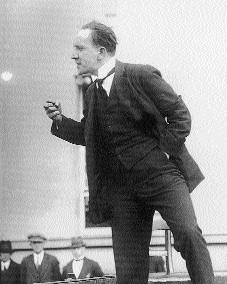
Kevin O’Higgins—‘When asked by a British captor how he would like five or six bullets in his head, he is said to have replied that he would not particularly mind the last four or five’. (George Morrison)
The original Dictionary of National Biography (henceforth referred to as the DNB), edited by Leslie Stephen and Sidney Lee, appeared between 1885 and 1900, and was followed by a series of supplements. The current edition (henceforth ODNB) retains the DNB’s 36,807 lives: it lists the original contributors where they remain as signatories of revised entries. Those Victorian stalwarts D. J. O’Donohue (41 entries), Sir J. T. Gilbert (28) and Robert Dunlop (24) dominate the Irish contributors to the DNB.
The DNB still casts a long shadow over its successor. There is a palpable over-representation of Irish subjects who died in the half-century before the completion of the original volumes, and a noticeable declension for the half-century following. The DNB also distorts the choice of subjects in the ODNB. There are vestryfuls of (deservedly) obscure Anglican clergymen, and barracksfuls of army officers (even an 1803 expert would be hard pressed to identify Lyde Browne). The influence of W.J. Fitzpatrick may be seen in the entries on all those ’98 informers with whom he was obsessed—Newell, Higgins, Magan.
An admirable feature of the on-line ODNB is that the old entries can be called up alongside the new (the link here is ‘DNB archive’, which pops up a window for comparing old and new biographies). It is striking to see the virulent hostility to Fr Nicholas Sheehy in the original entry, for example, and one can calibrate how far reputations have receded and advanced over a century.
On-line version
The on-line version is available via personal or institutional subscription. Individual rates are £195 for twelve months or £50 for three months. It is updated three times a year, at an anticipated rate of 500 fresh entries per annum.
Personally, I love books and libraries and think it inconceivable that anyone would choose a scholarly career whose spirit did not soar upon entering the great dome of the National Library, the arched magnificence of the old Library in Trinity College, Dublin, or the intimate warmth of the Royal Irish Academy library. Consulting the ODNB has been transformational: this is the first time that I would prefer to have access to the website rather than to the 60 printed volumes. In that sense the ODNB is epoch-making: it marks the coming of age of digital scholarship, the first occasion when the web delivers on its obvious potential as a scholarly tool. It asks to be judged on practicality, accuracy and accessibility, and it triumphantly passes the test. Hitherto the fastidious scholarly community has held its collective nose as vast quantities of untreated sludge slurried its way through the internet. We can now relax, inhale fully and smell real coffee at this site.
Browsing the entries is a great deal of fun: my eye fell on this one by Peter Mandler on the seventh marquess of Bristol (1954–99), a descendant of the eccentric eighteenth-century earl-bishop and cuttingly described here simply as ‘wastrel’:
‘Hervey, Frederick William John Augustus.
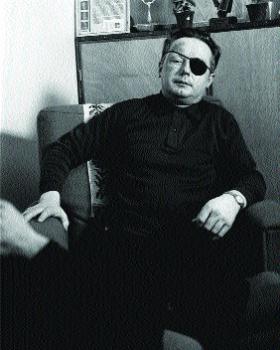
The on-line update includes a photograph of Seán Mac Stiofáin, with his cartoon-villain eye-patch. (IP Photos)
His downfall came with the premature inheritance of a trust fund of over £1 million, and further millions, oil wells in Louisiana, and a 57,000 acre Australian sheep farm when he was twenty-one. His chief occupations were building up his millions in oil, shipping, and property deals and dissipating them in cocaine, heroin, fast cars, rent boys, and a large retinue of camp followers. Bristol was notorious for mean-spirited practical jokes, most famously sending out a young Texan woman on to a lake in a rubber dinghy and then sinking her with an air rifle. Died 1999. Rumours of AIDS had circulated, but the coroner recorded “multiple organ failure brought about by chronic drug abuse”. Bristol was a gift to obituarists, who made an imaginary genetic link with the eccentricities of assorted eighteenth-century Herveys. But the true fatality lay not in the genes, rather in too much money too early, too many drugs, and, possibly, too little love.’
A collective name might be ‘a precision of lexicographers’, and a dictionary stands or falls by its level of accuracy and comprehensiveness. Inevitably a project of this magnitude incited furious—and largely spurious—rows in the literary pages. Count Nikolai Tolstoy was apoplectic about the inaccuracy of the entry on his stepfather, the enigmatic novelist Patrick O’Brian. Institutional keepers of the flame of Jane Austen and Florence Nightingale leaped to the defence of their charges, and some alleged that the entry on George V had trampled on the fine lawn of English constitutional protocols. A more balanced view, based on a trawl of the Irish entries, would be that the overall level of accuracy is commendably high, and that the errors are minor and easily rectified. Sam Johnson famously described a lexicographer as ‘a harmless drudge’, and here the drudgery has been admirably expended in collating this ocean of data.
Four new features
Four features of the ODNB stand out. First, close to 5,000 medieval lives (defined as the years to 1500) are now included, rectifying a pronounced weakness in the original edition. Irish medievalists have added their fair share, and there is a fine series of lives of the Irish saints (a superb one on Patrick), as well as a series of outstanding entries by T. Charles Edwards and Marie Therese Flanagan.
Second, there has been a determined effort to include more women. Women comprised four per cent of the entries in the DNB: that has now jumped to ten per cent (5,671 entries), improving to eighteen per cent for twentieth-century entries, and peaking at almost one quarter for first-time entrants to the dictionary across all periods. I counted 275 Irish women from an Irish-born total of 2,818 entries.
Third, there has been an effort to broaden the entries beyond the alleged ‘great and the good’: there is more support for the ‘equality’ over the ‘quality’, and the ODNB has an inclusive feel and an international scope. Irish and American lives, for example, are surprisingly well represented. One thing has not changed on this front: length of entry still functions as an indicator of hierarchy. Entries run from 25 to 35,000 words.
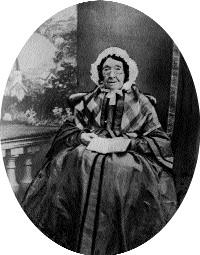
Mary Ann McCracken—a well-judged contribution by A.T.Q. Stewart. (Ulster Museum)
Fourth, images are now included, where available. Ten thousand subjects now have a portrait image attached. A handy ‘image search’ function directs readers to portraits used in the dictionary and held in a particular institution—for example, all subjects whose portraits hang in Trinity College, Dublin, or in the Irish National Portrait Gallery. Countess Markievicz appears here in a fetching military pose, and the on-line update includes a photograph of Seán Mac Stiofáin, with his cartoon-villain eye-patch. Surprisingly, despite his status as a contemporary visual icon, no image of Bobby Sands accompanies his entry.
Irish interest
Impressively, there are c. 5,000 subjects who were either born in Ireland (2,818) or who are recorded as being of Irish descent (2,204). The second category includes many with only tenuous connections—John Lennon, for example. It is striking how many well-known Irish people were born overseas: Cyril Cusack in South Africa; John Mahaffey in Switzerland; Seán MacBride in Normandy; A.H. Rowan, Jack B. Yeats, Maud Gonne, Constance Markievicz, Horace Plunkett, Jim Larkin, Tom Johnson, Maria Edgeworth and Estyn Evans in England; James Connolly in Edinburgh; de Valera in the USA; and Helen Waddell in Tokyo. A raft of Presbyterian ministers born in Scotland also feature.
At a minimum, ten per cent of the ODNB entries are of direct Irish interest, as there are also hundreds of British-born administrators, clergymen and politicians who had an impact on Ireland. There is a handy list of lord lieutenants of Ireland 1640–1922, almost all with an entry. Other helpful lists include ‘Heads of government in Ireland (1919–2001)’ and ‘Saints’.
From the point of view of Irish contributors, the ODNB is a crossover between a ‘greatest hits’ and a compilation album. There are admirable treatments of Brigit by T.M. Charles Edwards, O’Connell by R.V. Comerford, Yeats by Roy Foster, Behan by Joan Littlewood, Asenath Nicholson by Maureen Murphy, and William Wilde by Jim McGeachie. David Fitzpatrick has a fine entry on Edward McLysaght: he might have noted his mischievous sense of humour and his delight in practical jokes. I was glad to learn that the Belfast United Irishman and naturalist John Templeton was the first to grow wild fuschia and to sketch the now-extinct Lough Neagh char. I also enjoyed David Harkness’s dry take on Kevin O’Higgins: he describes his subject’s
‘self-deprecating humour that expressed itself even at the most trying of moments. When asked by a British captor how he would like five or six bullets in his head, he is said to have replied that he would not particularly mind the last four or five. Even at the end, when those around tried to offer encouragement, he had whispered “There is no hope. I should be dead by now, only I have always been a bit of a diehard”.’
Among weaker entries is the curiously benign entry on Edward Cooke that inexplicably ignores his intelligence-gathering; a rather tepid entry on Jonah Barrington; two old-fashioned and jaded treatments of James Connolly and Patrick Pearse; an excessively definite and judgemental one on Roger Casement; and a needlessly offensive and misleading entry on James Cotter, listed crudely as a ‘Jacobite agitator and rapist’.
Inevitably a reviewer will be as interested in the excluded as the included. Eamonn Andrews, Siobhan McKenna, Cyril Cusack, Joan Trimble and Josef Locke feature, but such outstanding actors as Patrick Magee, Jack MacGowran (Beckett’s favourite actor) and Donal McCann don’t make it onto the ODNB stage. Neither Luke Kelly of the Dubliners nor the blues guitarist Rory Gallagher make it, but Phil Lynott struts his stuff (albeit with a vapid ‘Celtic’ reference). Astonishingly, there is no Bulmer Hobson, F.J. Bigger, William Martin Murphy, Dan Breen, Joe McGarrity or Liam Mellows. Novelists James Hanley and Peadar O’Donnell make the cut, but the plain people of Ireland might want to know where Brian O’Nolan (Flann O’Brien) got to—detained in a pub, perhaps? The three Catholic Butler archbishops of the eighteenth century are absent, as is that forceful character Bishop Nicholas Sweetman. Artists Mainie Jellett, William Orpen and Jack B. Yeats feature, but not Aloysius O’Kelly, Harry Clarke (a breathtaking omission), Paul Henry, Seán Keating or Tony O’Malley. Seán Lemass is covered by John Horgan but Jack Lynch (ob. 1999) goes unrecorded. There are remarkably few subjects from the recent Troubles (only Roy Bradford, Bobby Sands and Gordon Wilson). In a spirit of inclusiveness, Deen Mahomet appears but not Tony Small, an important black stripe to insert in the tricolour. R.L. Praeger is in but his sister Rosamund, whose status as a children’s novelist grows apace, is out. Robert Brennan features
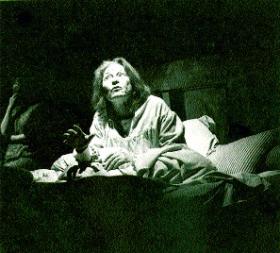
A rather bitchy entry on Siobhan McKenna—‘she quarrelled, drank, and fought—all to excess—and, sadly, became a kind of caricature Irishwoman. Her principal performance, in other words, was given off-stage’. (Amelia Stein)
but not his daughter Maeve, whose reputation has also soared recently. Other surprisingly absent entries are Pietro Bossi, designer of the prized inlaid marble chimneypieces, the photographer W.H. Lawrence, the songwriter P.J. McCall and the architect George Wilkinson. Overall the dictionary is poor on Irish entrepreneurs and scientists. The Brian Lalor-edited Encyclopaedia of Ireland did a vastly superior job on that front. It is also disappointing that the entry on the anthropologist A.C. Haddon is not updated, and that his Irish coadjutor C.R. Browne is entirely ignored.
Irish women
In the entries on women, there is a fine treatment of Mary Butters (‘the Carnmoney witch’) but, remarkably, neither Brigid Cleary nor Biddy Early gets a look-in. A valuable group entry treats the Knock visionaries. The rather bland Mary Mathews gets an entry, but the much more significant Dorothea Herbert and Matilda Tone (about whom Nancy Curtin has written brilliantly) do not. It is a pleasure to welcome excellent new entries on the poet Henrietta Battier, Martha McTier, Mary Ann McCracken (a well-judged contribution by A.T.Q. Stewart), Anne Devlin and Mary Goddard (an astute piece of detective work by A.C. Elias).
The women of the 1916 period are well represented. The entry on Kathleen Lynn is coy about her relationship with Madeleine French, which Siobhan Kilfeather has characterised as lesbian. It is good to be reminded that Countess Markievicz was the first woman MP in 1918, and to be aware of the path-breaking work of Anna Johnston and Alice Milligan. Surprisingly, Sarah Curran does not feature, although there is a new entry on Mary Jane O’Donovan Rossa.
Occasionally the English sensibility shines through in some entries. Rather bitchily, it is said of Siobhan McKenna that ‘she quarrelled, drank, and fought—all to excess—and, sadly, became a kind of caricature Irishwoman. Her principal performance, in other words, was given off-stage.’ The entry ignores her indubitably superlative swansong in Bailegangaire, and to listen to the Abbey tape of her Widow Quinn is to be instantly reminded of her unrivalled command of Synge’s rhythm.
McKenna’s is one of the few entries where a discordant English note is struck on Irish subjects. On Eriugena, Edmund Burke (Paul Langford offers an impressive amount of citations from Eighteenth-century Ireland), James Barry and Oscar Wilde, the Irish background is brought adequately to the foreground. The entry on Castlereagh traverses this delicate ground less assuredly. It blandly tells us that: ‘On 20 August, after his hearse had been reviled by some malicious spectators, he was buried next to Pitt in Westminster Abbey’. Those ‘malicious’ participants were London Irish, who showered his coffin with dead cats—a riposte to Castlereagh’s comment that ‘he would make the United Irishmen as tame as gelded cats’.
I was also surprised that there was no reference to the Galway background of the enigmatic alchemist Sir Edward Kelly, and that the entry on Ned Kelly fails to quote from the Jerilderree letter—one of the highpoints of Irish prose and a classic in the lively genre of threatening letters. In general, though, the treatment of the Irish overseas is pretty good. Among a plethora of interesting Continent-based figures are Gerat Barry (a pioneering military theorist, based in Spain, whose Discourse on military discipline was written in 1634), Michael Moor, Conor O’Mahony, Richard Hennessy (of brandy fame) and Peter Lacy. The Newfoundland Irish are represented by Patrick Morris and
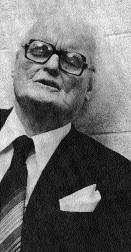
Robin Dudley Edwards—‘The pity is that nothing that Dudley wrote captured the flamboyance, the arrogance, the perverseness, the passion, the erudite intuition, and the theatrical instinct that made him what he was, a great performer whose exuberance irradiated “the dismal muse of Irish history”.’ (Irish Times)
Bishop James Louis O’Donel but, surprisingly, the great nineteenth-century bishop Michael Anthony Fleming is not included.
Irish language background
It is also useful to assess the ODNB’s treatment of figures from a Gaelic or Irish-language background. My estimate is that it reaches close to 500 entries (one-tenth of Irish entries). There is an entry on the mythological Oisín but not on Cuchulainn. Others not to appear include Mícheál Ó Longáin, John O’Daly, George Sigerson, P.S. Dinneen, Peadar Ó Laoghaire, Padraic Ó Conaire, Seán Ó Ríordáin, Mairtín Ó Cadhain and Michael Hartnett. Irish scholars also get short shrift—no Kuno Meyer, no Carl Marstrander, no ‘Binchy, Bergin and Best’. Seán Ó Riada (inexplicably) is not included, although Turlough O’Carolan and Edward Bunting are.
Sporting entries are few and far between. Cabra-born Liam Whelan features in the group entry on the ‘Busby Babes’ and there is a comprehensive entry on motorcyclist Joey Dunlop. Christy Ring and Nicky Rackard do not make the team, and some of the Irish entries lack a feel for what would interest an Irish reader. Thus the entry on GAA administrator James Nowlan ignores the only fact that most Irish people might know about him—that Kilkenny’s Nowlan Park is named after him.
As a current London exhibition makes clear, there is a long tradition of Irish people on the make in London, notably in acting, sport, mistressing and restauranting. Damian Duff can be thought of as a modern London equivalent of the great handball player John Cavanagh, immortalised in William Hazlitt’s vibrant pen picture. Regrettably, we do not know where he was born in Ireland, and the same holds true for James Ryan, billed as ‘the young Hibernian’, funambulist and circus-owner. There is a plethora of Irish people on the stage and in the entertainment business to mirror the bland array of recent Irish charmers like Terry Wogan, Des Lynam, Keith Duffy, Graham Norton or Diarmuid Gavin. The restauranteur Don Saltero (ob. 1728) appears like an ancient avatar of Conrad Gallagher or Richard Corrigan. I loved the description of the services available in, and the interior decor of, his Chelsea coffee-shop:
‘He was famous for his punch, could play a little on the fiddle, and, for no charge, would shave, bleed, and draw teeth. Saltero’s museum was an astounding assemblage of oddities, including a petrified crab from China, medals of William Laud, Gustavus Adolphus, and the seven bishops who resisted James II’s declaration of indulgence, William the Conqueror’s flaming sword, Henry VIII’s coat of mail, Job’s tears (of which anodyne necklaces were made), a bowl and ninepins in a box the size of a pea, Madagascar lances, and the root of a tree in the shape of a hog.’
The headings used are also a point of interest. In the DNB, ‘rebel’ was a term often used for Irish historical figures. In many cases that has been upgraded to ‘Irish nationalist’, not entirely happily: for example, the United Irishmen were republicans, not nationalists, and the term ‘Irish nationalist’ is a crude descriptor of Henry Joy McCracken or Thomas Russell. A rather pedantic line has been taken in citing the names of individuals. Not many people would recognise Mary Nesta Keane (Molly Keane) or William Fanaghan Lynch and Thomas Bernardine Barry, who turn out to be Liam Lynch and Tom Barry in disguise. Augustine Joseph Clarke is the poet Austin Clarke.
Errors
![John Redmond—buried in ‘a family vault in Wexford city’ [sic]. (National Gallery of Ireland)](/wp-content/uploads/2013/02/Surfing-an-ocean-of-dataOxford-Dictionary-of-National-Biography-6.jpg)
John Redmond—buried in ‘a family vault in Wexford city’ [sic]. (National Gallery of Ireland)
And liberties are routinely taken with Irish geography. The entry on Pitt the Elder gives his wife as the daughter of Villiers Stuart of Dromara (recte Dromana), Co. Wexford (recte Waterford). Nicholas Aylward Vigours of Soulsborough should be Solsboro. Russborough is given as in County Wexford (recte Wicklow) in the entry on Sir John Beit. S.C. Hall’s entry assigns Geneva Barracks to Wexford (recte Waterford), while James Morton’s does the same with Cappoquin. Ernest Walton was born at Dungarvon (sic). James Clarence Mangan died in the Meath Hospital, Long Lane, not Long Street as given here.
The beauty of the on-line edition is that the correction process has already started and the May 2005 update should eliminate the most egregious errors. There is also a planned set of modern Irish lives, scheduled for October 2005, that will presumably address some of the obvious gaps.
Searching
A brilliantly successful feature of the online edition of the ODNB is its superb search facilities. This is simply the best website that I have ever consulted. It is beautifully designed, fast and comprehensive. One can search in the conventional ways by person, date, place and subject-matter. But one can also search for specific words: ‘Fenian’ will throw up 150 entries, and ‘bastard’ generates 227. ‘County Wexford’ generates 322 hits, running to seventeen pages of references. Cross-listed searches are also possible. ‘Subjects born in Dublin’ generates 756 individuals, while Leitrim yields fourteen. You can find everyone educated at Trinity College, Dublin, between, say, 1920 and 1925. These searches might throw up hitherto unsuspected connections—through education or residence—between people.
Searches can also be intersected with broader identities: for example, all eighteenth-century inhabitants of County Cork who were Quakers or Belfast physicians in the twentieth century (medicine/physicians in occupation searching, plus residence in Belfast 1900–2000). A further facility is to search for the movement of people: a list of people born in Ireland between 1700 and 2000 and then refined for those who died in London points to emigrants. The same applies for people who either resided or died in the USA, France or India. These results can be further refined by profession: all political activists who moved to the United States, for example.
Every entry now includes an assessment of filthy lucre, under the heading ‘wealth at death’. Using ‘Reference searching’, every Dubliner who left over £1 million at their death can be identified. Due diligence could establish the truth of the old chestnut that Belfast had more millionaires than any other city in 1900. Roger Casement left £135, Eamon de Valera £3,185, and Seán Lemass £43,586. You can also establish who died penniless (that sad list includes Lady Pamela FitzGerald, Anne Devlin and Patrick Pearse). By contrast, Waddell Cunningham died worth £60,000 (including a slave estate in Dominica), and the spy-master Francis Higgins left £12,380.
The Royal Irish Academy’s Dictionary of Irish Biography (hard copy and digital) is due for publication by Cambridge University Press in 2007. With an editorial remit to include only people born in Ireland or with significant Irish careers, it is scheduled to contain 10,000 lives. While it is being produced for only a fraction of the ODNB’s budget, inevitably—and perhaps unfairly—comparisons will be made. DIB managing editor James McGuire and executive editor James Quinn have a hard act to follow but much to aspire to in this superb production.
Kevin Whelan is Director of the Keough Notre Dame Centre in Dublin.
Oxford Dictionary of National Biography, H.C.G Matthew and Brian Harrison (eds), 60 vols, Oxford University Press, £7,500, ISBN 019861411X, code 10KCDNB1.
Oxford DNB Enquiries, Oxford University Press, Great Clarendon Street, Oxford OX2 6DP, UK, info-oxforddnb@oup.com, +44 (0)1865 355042.
Oxford DNB Sales—Direct Sales Dept., Oxford University Press, Saxon Way West, Corby, Northamptonshire NN18 9ES, UK, bookorders.uk@oup.com, +44 (0)1536 454549.
www.oup.com/oxforddnb/info.
















